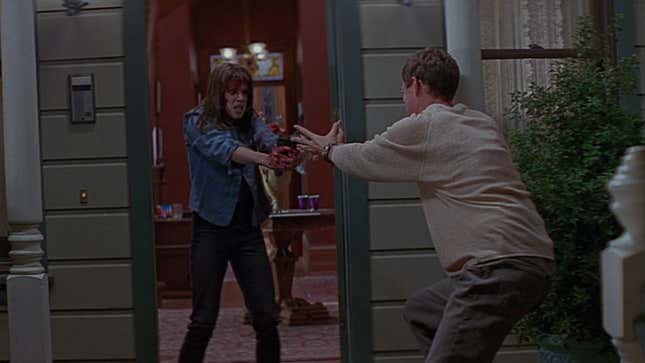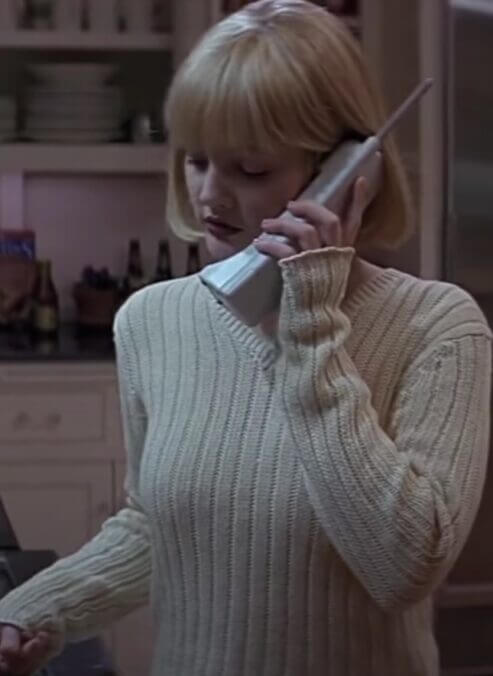Scream and the Art of Being Smart About Being Dumb
Scream is a relic of its time, but an utter standout in genre filmmaking that still holds up
EntertainmentMovies

“It’s never as good as the first time,” Sade Adu sang of love. I have rarely, if ever, found this to be true (third time’s a charm, if we’re going to generalize), but I do think it applies to the 1996 slasher movie Scream. Those of us who saw this in the theater early into its release had no idea what we were in for. Its promo campaign was vague, little more than a bunch of actors looking terrified and running and an ominous voiceover declaring, “Someone has taken their love of scary movies one step too far.” Drew Barrymore, arguably the movie’s biggest star at the time, was featured prominently. She was clearly the protagonist.
And then, 10 minutes in, after her character Casey was subjected to a sadistic game of cat and mouse over her cordless phone, she was brutally murdered and strung up on the tree in her yard. It was the single most shocking thing that I’ve ever seen in a mainstream movie. I was terrified like never before in a movie theater and rarely since. All bets were off. This movie would clearly resort to anything to fuck up its viewers. Remaining in the theater for the next 90 or so minutes was exhilarating torture.
The adrenaline rush of that opening sequence is something I wish I could experience again. Once you’re aware, the movie loses some of its visceral power. But certainly not all. Scream is a classic, up there with all of the movies its characters reference and in many cases, funnier and sharper than them. Scream is a relic of its time, but an utter standout in genre filmmaking. It inspired countless knock-offs and reinvigorated horror (slasher movies, specifically), but nothing that it gave birth to even threatened to Liza it and supersede its cultural import.

In a TV documentary included as a bonus feature in the Blu-ray set of the first three Scream films, many of those involved in the production emphasize that horror had been gutted and left for dead in the years before Scream showed its (ghost) face. The previous decade’s reliable franchises like Friday the 13th and Halloween had run out of steam, plodding along as brainlessly as the murderers they depicted. There were few truly original horror films in the early ’90s to capture mainstream attention (save the one-off brilliance of something like Candyman). The thriller had taken over. In vogue were movies with horrific elements that were either not horror films (like Basic Instinct) or that took such a radical approach to genre that they were unrecognizable as such if they qualified at all (like The Silence of the Lambs).
-

-

-

-

-

-

-

-

-

-

-

-

-

-

-

-

-

-

-

-

-

-

-

-

-

-

-

-

-

-

-

-

-

-

-

-

-

-

-

-








































